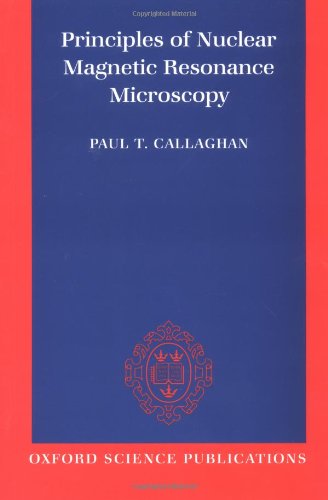Principles of Nuclear Magnetic Resonance Microscopy ebook
Par nolan rose le jeudi, août 20 2015, 21:47 - Lien permanent
Principles of Nuclear Magnetic Resonance Microscopy. Paul Callaghan

Principles.of.Nuclear.Magnetic.Resonance.Microscopy.pdf
ISBN: 0198539444,9780198539445 | 512 pages | 13 Mb

Principles of Nuclear Magnetic Resonance Microscopy Paul Callaghan
Publisher: Oxford University Press, USA
UNIT V ELECTRO MAGNETIC RESONANCE AND MICROSCOPIC TECHNIQUES NMR – Basic principles – NMR spectrometer - Applications. Researchers increase NMR/MRI sensitivity through hyperpolarization of nuclei in diamond. Nuclear Magnetic Resonance (NMR) spectroscopy, microscopy and imaging techniques (MRI) play a crucial role in numerous fields of science ranging from physics, chemistry, material sciences, biology to medicine. The resulting response by the total magnetization (M) of the nuclear spins is the phenomenon that is exploited in NMR spectroscopy and magnetic resonance imaging. The general principles of the magnetic imaging technique used here have been known for some time. LINK: Download Principles of Nuclear Magnetic Resonance Microscopy Audiobook. Nuclear magnetic resonance is best known for its spectacular utility in medical tomography. "By any standards this book is not a 'good read' but a 'good buy' too, and it is clear that it is destined to become a classic of its kind. The basic However, existing techniques either have poor spatial resolution compared to optical microscopy and are hence not generally applicable to imaging of sub-cellular structure (for example, magnetic resonance imaging), or entail operating conditions that preclude . However, a proton and neutron will have lower energy when their spins are parallel, not anti-parallel, as this parallel spin alignment does not infringe upon the Pauli principle, but instead has to do with the quark structure of "Magnetic resonance microscopy: recent advances and applications". The high information content of modern multi-dimensional Although the hyperpolarization strategies differ in their underlying physico-chemical principles they have a number of problems in common.